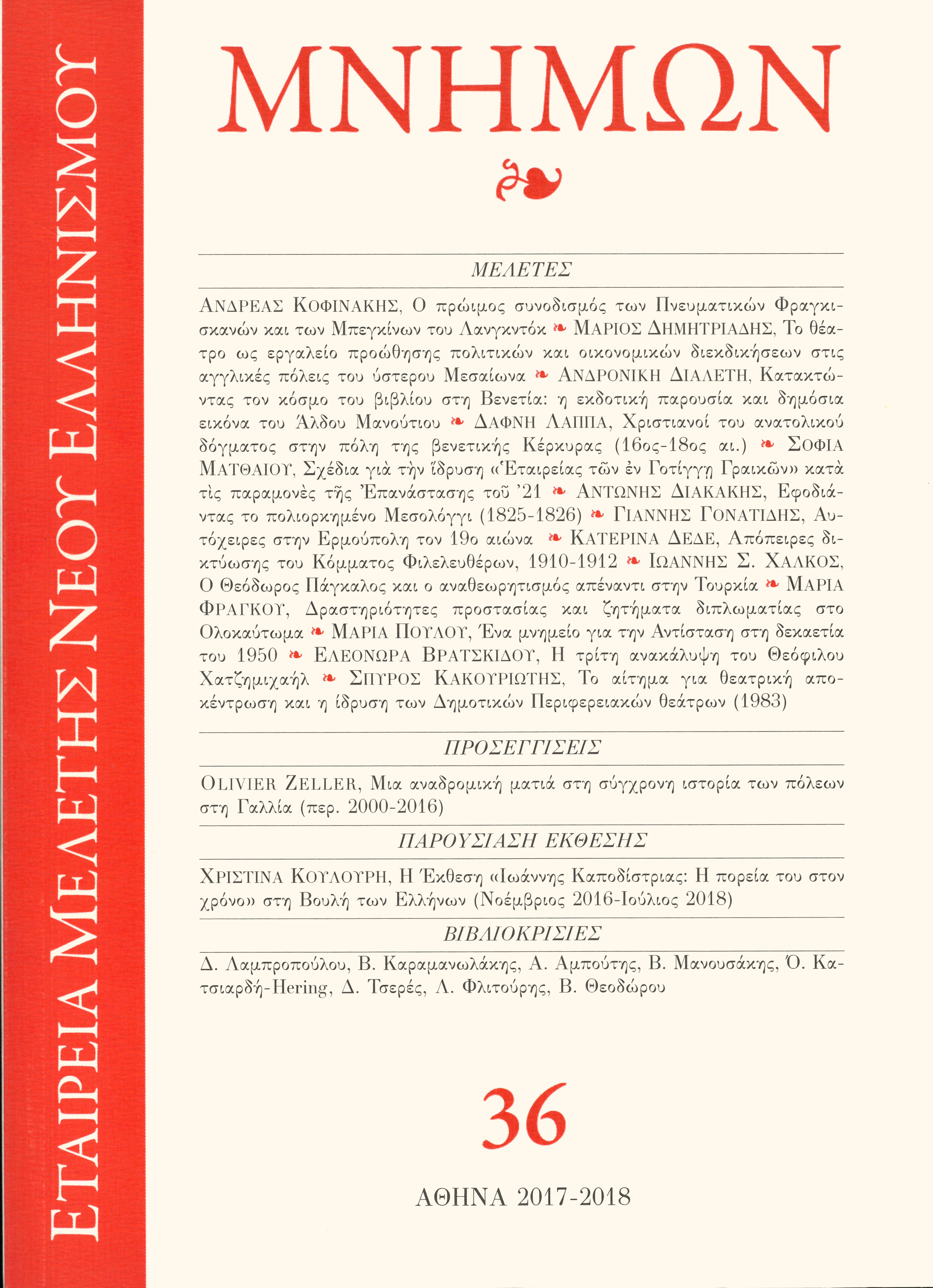THE THIRD ‘‘DISCOVERY’’ OF THEOPHILOS HADJIMICHAEL TIME FOR ART HISTORY?

Abstract
Based on the example of the Greek painter Theophilos Hadjimichael (c. 1870-1934), this paper examines the discursive and curatorial practices involved in the construction of folk art as an art historical category. The analysis elucidates tensions between the perceptions of artists and art historians; between art historical approaches and art criticism; between the consideration of folk art as an object of study per se and its evaluation merely with regard to its contribution to modernism. Focusing on the solo exhibitions devoted to Hadjimichael at the Kunsthalle Bern in 1960 and at the Musée des Arts Décoratifs in Paris in 1961, I investigate the extent and the ways in which the international reception of the artist differed from discourses that had been prevalent within the Greek art world in the 1930s and 1940s, strongly informed by the ideological and aesthetic aspirations of modernist circles. While the Parisian show largely adopted the orientations of Hadjimichael’s early apologists, perpetuating a mythologizing, hellenocentric reading of his art, the exhibition in Bern attempted a socio-historical approach, inscribing the appraisal of the roving folk-painter from Lesvos within the wider interest in the work of folk artists and autodidacts that had flourished in the western art world since the late nineteenth century. This disparate treatment of the artist in the two exhibitions was partly due to the specificities of art historiographical traditions in Switzerland and France. It also activated divergent genealogies regarding the ‘‘discovery’’ of naïve artists in the European context.
Article Details
- How to Cite
-
VRATSKIDOU, E. (2024). THE THIRD ‘‘DISCOVERY’’ OF THEOPHILOS HADJIMICHAEL: TIME FOR ART HISTORY?. Mnimon, 36(36), 317–349. https://doi.org/10.12681/mnimon.36967
- Issue
- Vol. 36 (2018): Μνήμων
- Section
- ARTICLES

This work is licensed under a Creative Commons Attribution-NonCommercial-ShareAlike 4.0 International License.
The copyright for articles in this journal is retained by the author(s), with first publication rights granted to the journal. By virtue of their appearance in this open access journal, articles are free to use (with the exception of the non-granted right to make derivative works) with proper attribution for non-commercial uses (licence Creative Commons 4.0). EKT/NHRF retains the worldwide right to reproduce, display, distribute, and use articles published in Mnimon in all formats and media, either separately or as part of collective works for the full term of copyright. This includes but is not limited to the right to publish articles in an issue of the Journal, copy and distribute individual reprints of the articles, authorize reproduction of articles in their entirety in another EKT/NHRF publication, and authorize reproduction and distribution of articles or abstracts thereof by means of computerized retrieval systems.

